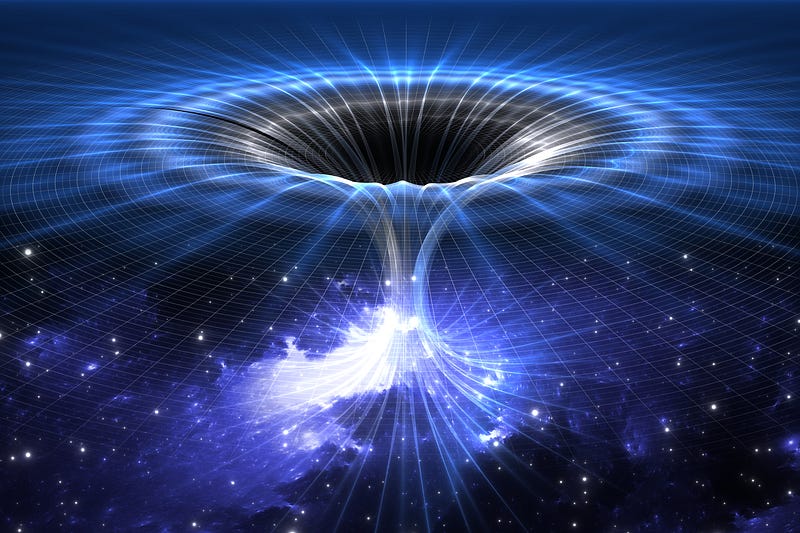Interstellar Travel: Charting Humanity's Cosmic Future
Written on
Chapter 1: The Urge to Explore
Humans have an innate drive to explore. We seek to understand what lies beyond our immediate surroundings, expanding trade routes and adapting to new environments. While our explorations once centered on Earth, our focus has now shifted to the stars. The prospect of visiting star systems light years away is not just a romantic notion; it has become a necessity. Given that our sun will render Earth uninhabitable in approximately one billion years due to its increasing brightness, we must consider where we might relocate.
Our nearest stellar neighbor, Proxima Centauri, hosts a potentially habitable exoplanet located about 4.2 light years away (nearly 25 trillion miles). To be blunt, conventional rockets and current space travel methods are inadequate for such a journey. Presently, we utilize low-thrust ion drives, chemical rockets, and gravitational assists from planets to navigate the cosmos. The Apollo 10 mission holds the record for the fastest rocket at a speed of 25,000 miles per hour. However, at that velocity, it would still take us hundreds of thousands of years to reach our interstellar neighbors. We require a travel method capable of covering the distance within a human lifetime, ideally a spacecraft that can achieve at least 10% of the speed of light.
First, let’s delve into the science behind rocketry.

The classical rocket equation, known as the Tsiolkovsky rocket equation after its Russian originator, outlines three primary factors influencing maximum speed: fuel mass, exhaust velocity (the speed at which exhaust gases exit the rocket), and the ship's total mass. This equation illustrates why our rockets must be significantly larger than the payloads they carry; both acceleration and deceleration require a substantial amount of the craft's mass to be dedicated to fuel. For instance, doubling a rocket’s exhaust velocity would necessitate 86% of the craft's mass as fuel. If deceleration is also required, that figure rises to 98%. Attempting to triple a rocket's speed, while still allowing for deceleration, means an astonishing 99.75% of the rocket would need to be fuel, leaving just a fraction for the actual spacecraft. Proposing interstellar travel with our current technology would necessitate a fuel tank larger than the observable universe.
So, what alternative technologies could facilitate a journey across the 4.2 light years?
One evident option is nuclear propulsion utilizing a fusion reactor. These reactors would utilize isotopes of hydrogen, such as tritium or deuterium. However, tritium has a limited shelf life of about 12 years since it decays into helium-3. The stars in our region of the galaxy are typically 5–10 light years apart, so using a fusion reactor would mean a transit time of approximately 14–15 years per light year. Consequently, a journey to Proxima Centauri could take a minimum of 59 years, and reaching stars further away might extend the travel time to as much as 150 years. If we aimed to explore the outer reaches of the Milky Way, approximately 80,000 light years distant, a fusion spacecraft could take about a million years to make the journey. The nearest galaxies, such as those in the Magellanic Cloud, are over 150,000 light years away, which would require a fusion starship to travel for roughly 2 million years.
While the idea of colonizing neighboring stars and gradually expanding outward sounds promising, estimates suggest that this method could take about 10 million years to colonize the entire galaxy. However, harnessing fusion technology presents significant challenges, as historical trials have shown.
Alternatively, some researchers have proposed repurposing nuclear bombs to propel spacecraft. By detonating a series of bombs behind a ship, it could achieve speeds of around 10% of the speed of light, allowing it to reach Alpha Centauri in just under 90 years. Yet, neither fusion reactors nor nuclear detonations present a feasible solution for interstellar travel within a single human lifetime. Various proposed strategies for manned interstellar travel include cryosleep, artificial life extension, multi-generational ships, or utilizing AI to assist in raising human embryos upon arrival at new worlds. Each of these approaches has its own set of challenges.
The core issue with interstellar travel isn't merely the distance. Traveling from Earth to the Moon and from Earth to the nearest star system essentially presents the same problem. The real obstacle lies in time. One human lifetime is simply insufficient for such a journey. Even if we could propel a spacecraft to near light speed, we would still encounter complications related to communication, navigation, and time dilation. So, what if we could reduce the distance instead?
Let’s explore the concept of traversing spacetime. This brings us into the realm of science fiction, where dimensions beyond our own might exist. A hypothetical fifth dimension—one that extends beyond our universe into a realm known as “non-space”—could potentially allow for instantaneous travel between two points. Imagine the fifth dimension as the space enveloping our universe. If our universe is a sphere, we and the other galaxies reside on its surface, while the interior represents non-space.

A more familiar concept is the wormhole, scientifically referred to as an Einstein-Rosen bridge. This “bridge” connects two points in spacetime, effectively shortening the distance—and therefore the time—required to travel between them. Theoretical physicists suggest that wormholes could be stabilized using exotic matter and advanced understanding of string theory. It's conceivable that black holes themselves function as these bridges, potentially leading to alternate universes. They may also connect different points in time, enabling us to emerge from a black hole thousands of years in the past or future.
One of the most promising travel methods could involve an antimatter drive. Antielectrons (positrons) and antiprotons can combine to form antihydrogen, which could serve as a fuel source, contained in magnetic chambers to prevent annihilation upon contact with normal matter. This reaction between antimatter and matter could operate at over 50% efficiency—far superior to the mere 1% efficiency of a fusion drive. With sufficient antimatter, we could reach speeds close to that of light, potentially making the journey to Alpha Centauri in just three years. However, the production of antimatter is slow, hazardous, and prohibitively expensive, placing interstellar travel out of our current reach.
Yet, the most effective spacecraft must balance efficiency with practicality. The success of sailing ships in history stemmed from their ability to harness environmental forces for propulsion and navigation. What if we designed starships that did the same?
The Bussard Ramjet concept gathers gas and dust from interstellar space and compresses it into fuel for a fusion rocket at the rear of the craft. This design does not carry its own fuel; instead, it collects resources from the interstellar medium using large magnetic fields. These fields could span from a few kilometers to several thousand kilometers in size. However, recent calculations by physicists Peter Schattschneider and Albert A. Jackson indicate that the magnetic field would need to be a staggering 4,000 kilometers (2,485 miles) in diameter and 150 million kilometers (93 million miles) in length. While a more advanced civilization might achieve this engineering feat, it remains beyond our current technological capabilities. Additionally, our solar system's region is particularly sparse in gas and dust, limiting the Bussard Ramjet’s potential. This design also relies on fusion technology, necessitating breakthroughs in that field as well.

The possibilities for interstellar travel extend far beyond fusion engines, nuclear bombs, wormholes, and antimatter collisions. We could explore concepts such as lightsails, magnetic sails, black hole drives, generation ships, tachyon drives, negative matter drives, the Alcubierre warp drive, ion engines, and more. As we deepen our understanding of the universe and its enigmatic laws, future engineers and scientists may devise even more innovative methods for space travel.
After all, we have about a billion years to unravel these cosmic mysteries.